Abstract
Minimum inhibitory concentrations (MICs) of sulfamethoxazole (SMX) and trimethoprim (TMP), alone and in three combinations, 20:1, 1:1, and 1:20, were determined on Diagnostic Sensitivity Test (DST) and Mueller-Hinton (MH) agars containing lysed blood for various inocula of 91 strains of Bacteroides fragilis from the U.S.A. and U.K. MICs of SMX were high with large inocula and higher on MH than DST, but results for TMP were less affected by these two factors. True SMX resistance was rare: 10 U.S.A. strains previously reported as resistant appeared to be susceptible. Maximum potentiation of MICs was observed when SMX and TMP were combined in ratios close to those of the ratios of their MICs, that is, SMX/TMP 20:1 for large inocula and the reverse for small inocula for determinations on DST and usually 20:1 for all inoculum sizes on MH. These observations explain some of the discrepancies in reports, but defer the problem of potential usefulness of the drugs in the treatment of infection with anaerobes to future study.
Full text
PDF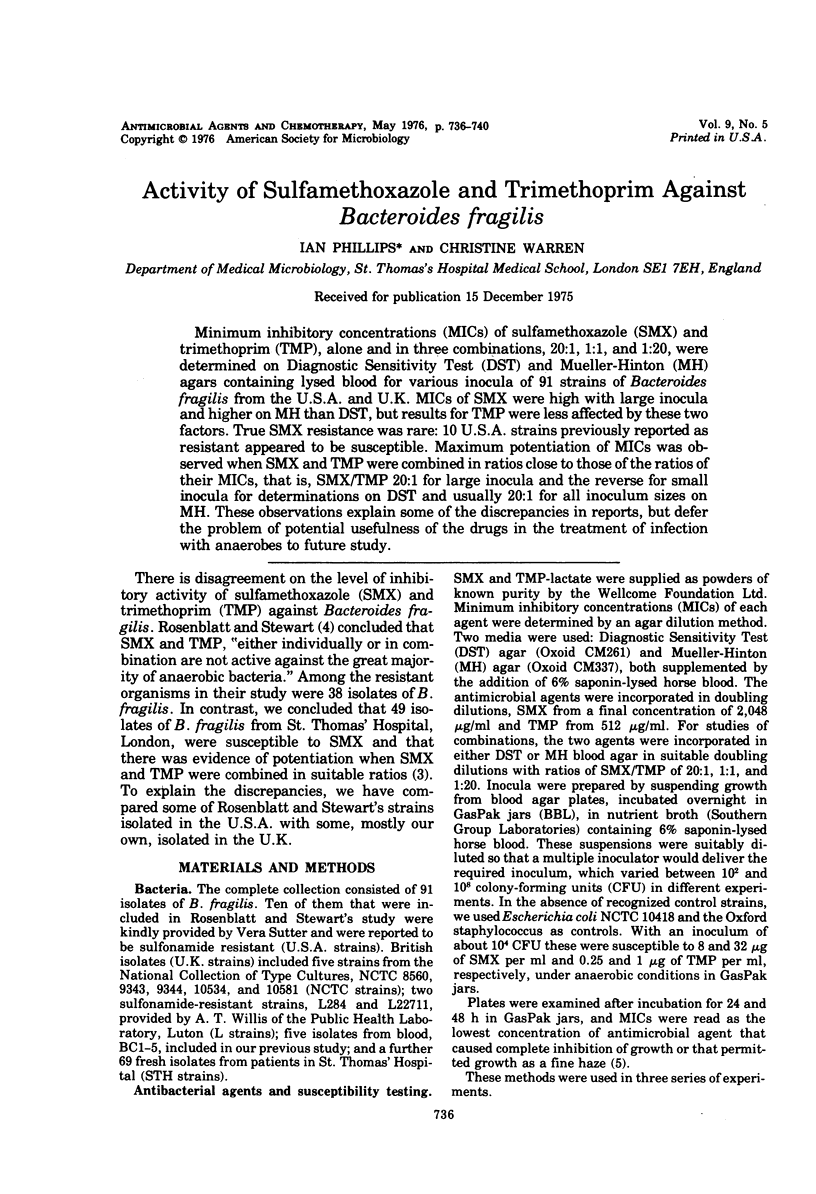
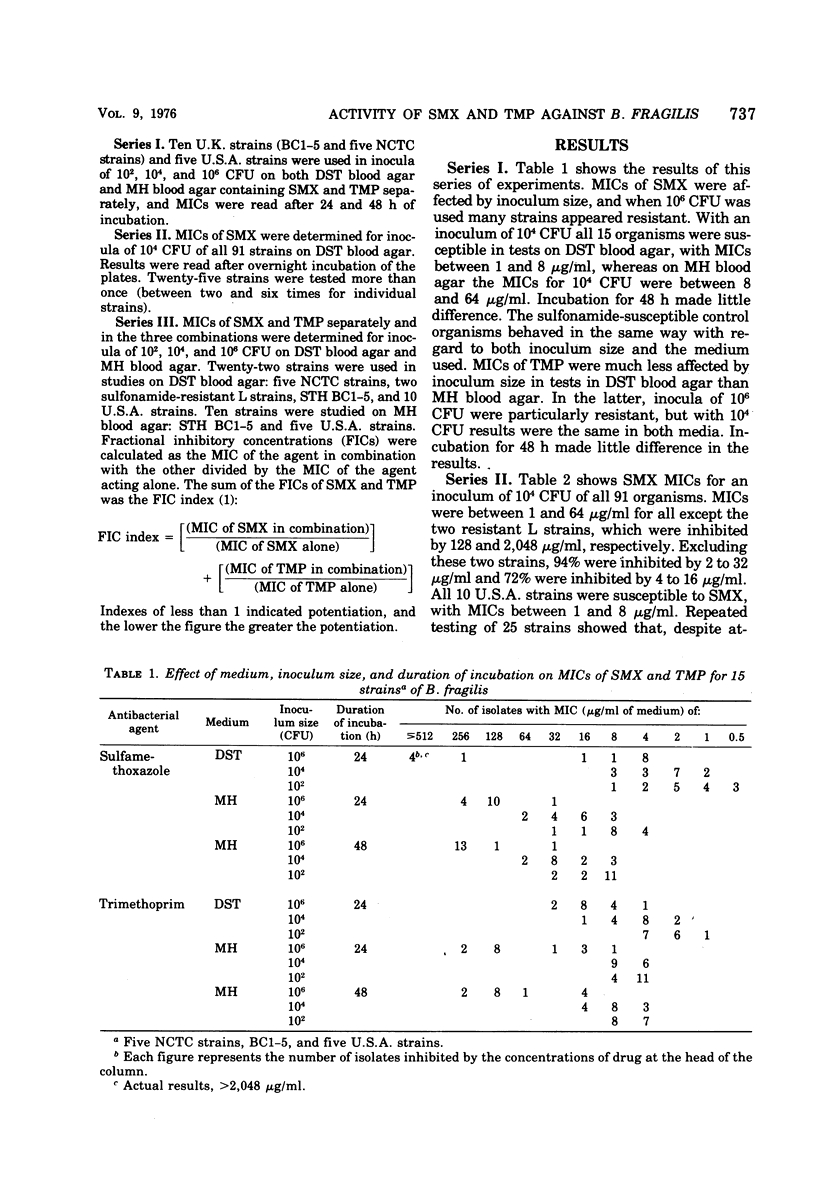
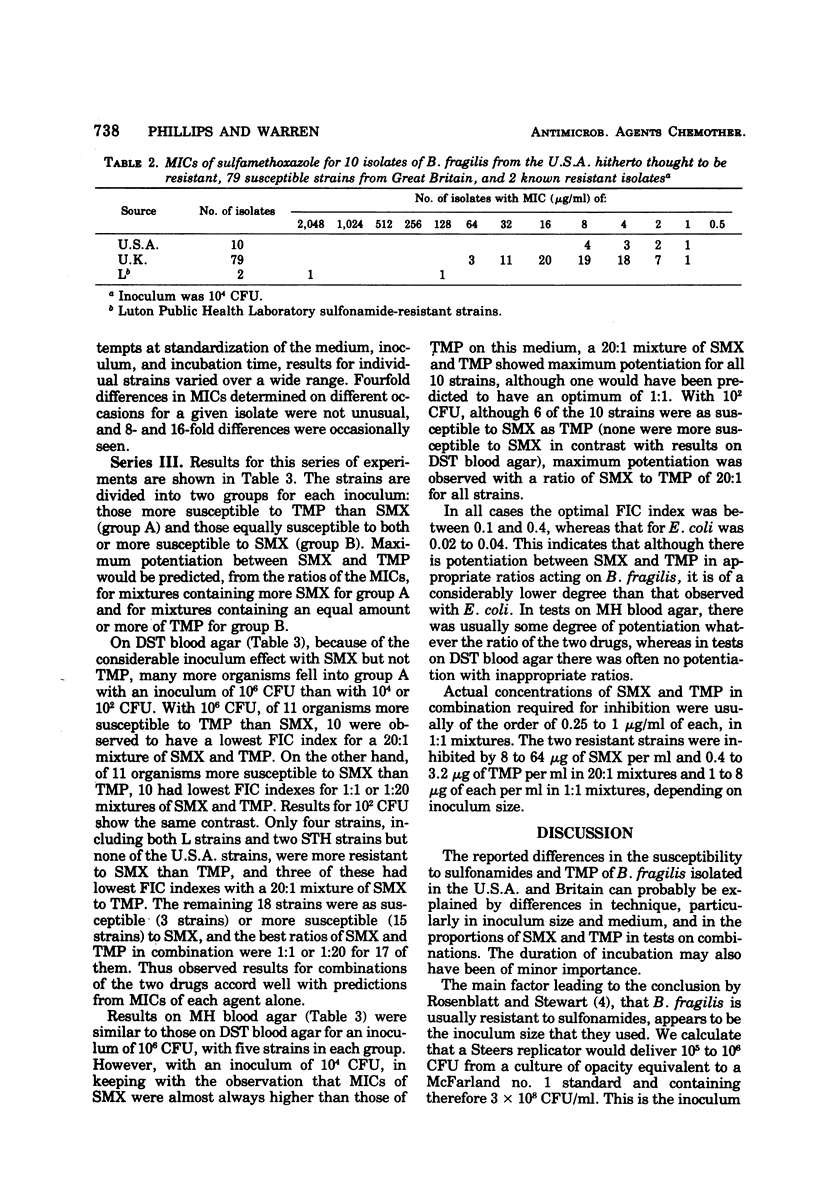
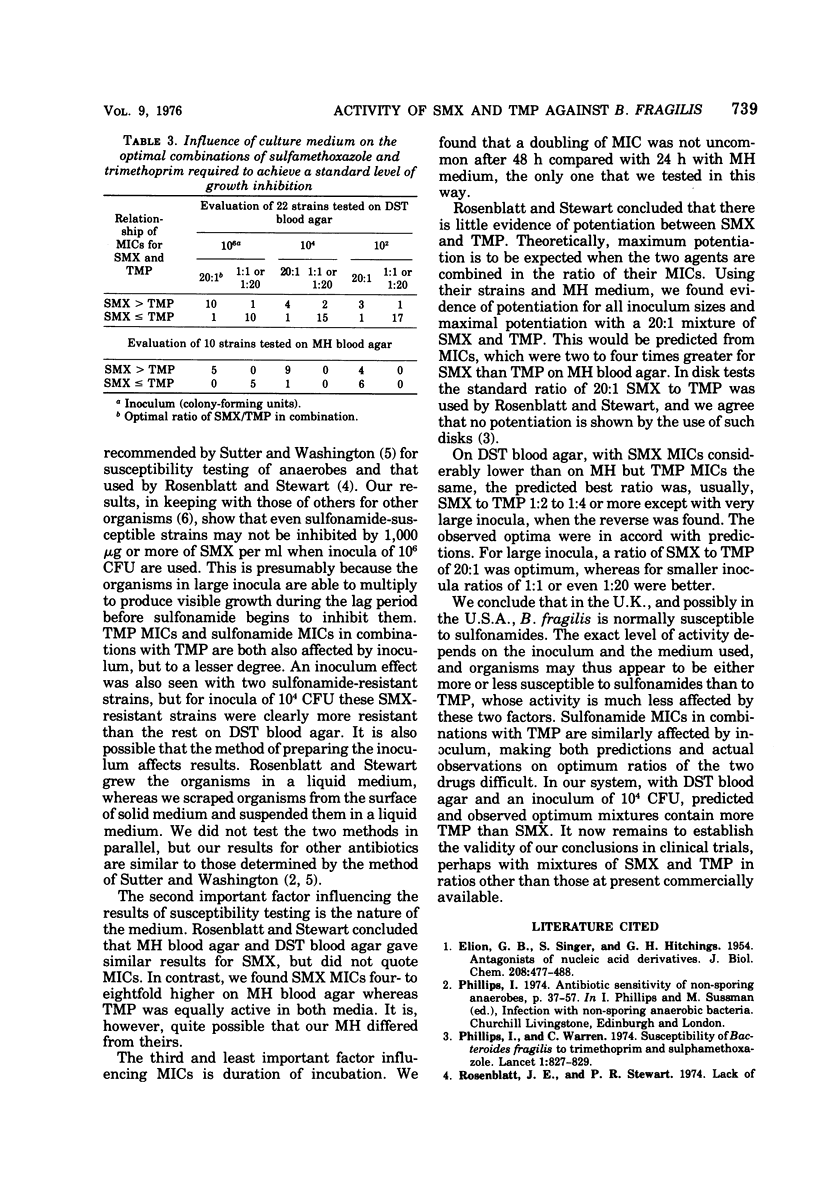
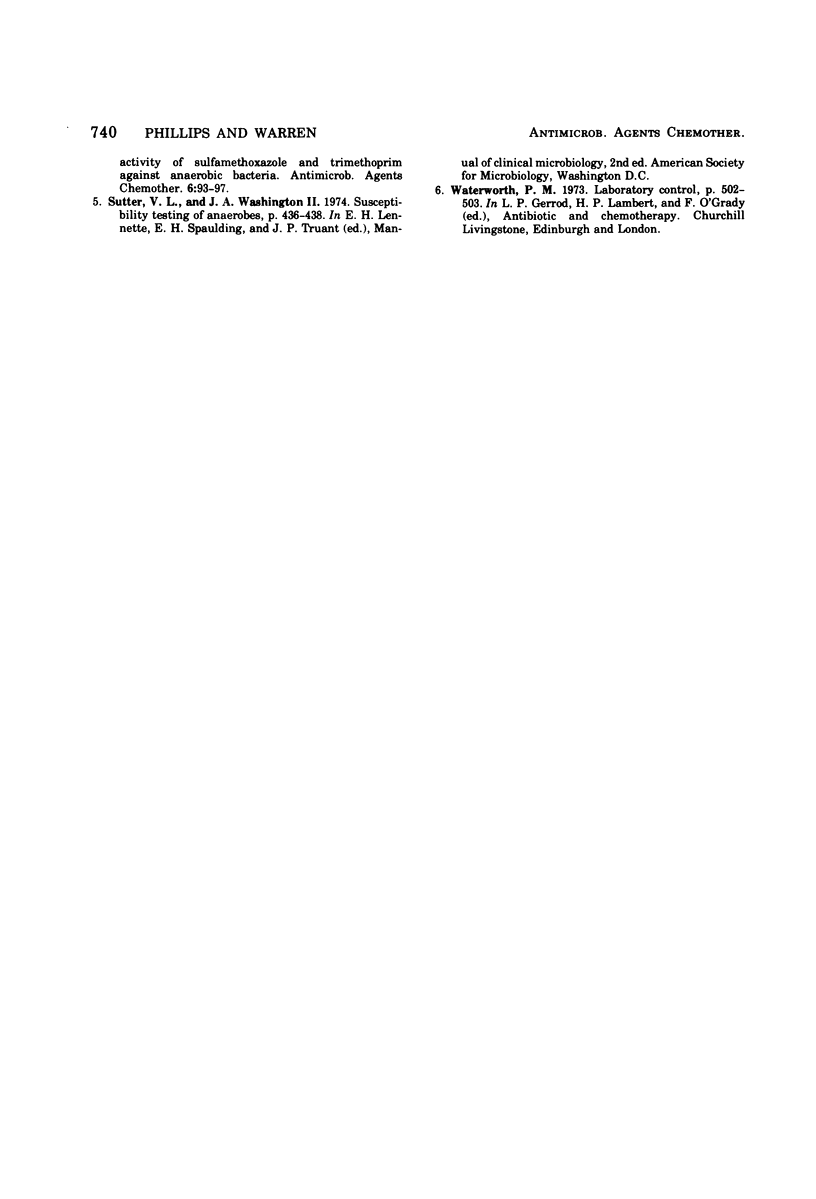
Selected References
These references are in PubMed. This may not be the complete list of references from this article.
- ELION G. B., SINGER S., HITCHINGS G. H. Antagonists of nucleic acid derivatives. VIII. Synergism in combinations of biochemically related antimetabolites. J Biol Chem. 1954 Jun;208(2):477–488. [PubMed] [Google Scholar]
- Phillips I., Warren C. Susceptibility of Bacteroides fragilis to trimethoprim and sulphamethoxazole. Lancet. 1974 May 4;1(7862):827–829. doi: 10.1016/s0140-6736(74)90481-4. [DOI] [PubMed] [Google Scholar]
- Rosenblatt J. E., Stewart P. R. Lack of activity of sulfamethoxazole and trimethoprim against anaerobic bacteria. Antimicrob Agents Chemother. 1974 Jul;6(1):93–97. doi: 10.1128/aac.6.1.93. [DOI] [PMC free article] [PubMed] [Google Scholar]


